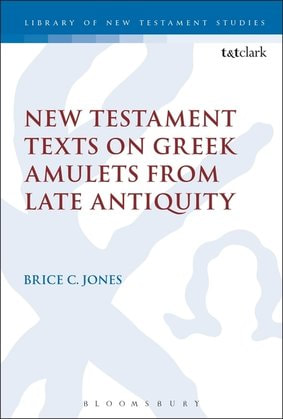 Since Christmas is quickly approaching, I thought I would point my readers to a fantastic article by my colleauge, Dr. Stephen Carlson, titled "The Accommodations of Joseph and Mary in Bethlehem: Κατάλυμα in Luke 2.7." This article was published in the academic journal New Testament Studies in 2010. Carlson's study turns the traditional interpretation of the "inn" as being a kind of ancient hotel on its head. He also denies the view that Jesus was born in a stable or barn. Through a detailed lexical and semantic analysis of the term κατάλυμα (traditionally translated "inn") and Jewish patrilocal marital customs during the time of Jesus, Carlson demonstrates that the reference to κατάλυμα in Luke 2.7 alludes to a marital chamber built on top, or onto the side of, the main room of a family village home. According to Carlson, the phrase διότι οὐκ ἦν αὐτοῖς τόπος ἐν τῷ καταλύματι should be rendered "because they did not have room in their place to stay." The reference to "their place" is the marital chamber attached to the family village home of Joseph where the married couple would have stayed for some time before finding their own place. Since there was no space in their room, Mary had to give birth in the larger main room of the house, where the rest of the family slept. Carlson also shows that it was common for a "manger" to be present in the main room of most Jewish homes and so this detail of the birth account is in keeping with Jewish living customs. I quote Carlson's conclusion found on page 342 of the article: "Luke's infancy narrative therefore presupposes the following events. Joseph took his betrothed Mary from Nazareth to Bethlehem (2.5). Bethlehem was his hometown (v. 3) and, in accordance with the patrilocal marital customs of the day, it must also have been the place where they finalized their matrimonial arrangements by bringing her into his home. As a newly married man, he no longer would have to sleep in the main room of the village house with his other relatives, but he and his bride could stay in a marital chamber attached to the house until they could get a place of their own. They stayed there for some time until she came to full term (v. 6), and she gave birth to Jesus in the main room of the house rather than in her marital apartment because it was too small, and she laid the newborn in one of those mangers (v. 7) common to the main room of an ancient farmhouse. After staying at least another forty days in Bethlehem (v. 22; cf. Lev 12.2–8), Joseph and Mary eventually moved to Nazareth to make their home together in her family's town (v. 39; cf. 1.26–27). To be sure, this scenario as presupposed in Luke's infancy account diverges greatly from the conventional Christmas story. There is no inn, no innkeeper, and no stable. But it is grounded in a careful exegesis of the text." Carlson's conclusions are so convincing that it would take considerable evidence to overturn them. Indeed, some may be uncomfortable with how this evidence changes the face of the traditional Christmas story, but it is, as Carlson admits, "grounded in a careful exegesis of the text." This article needs to be circulated widely, not only among academics, but also pastors and lay people alike, because it has serious implications for how we should understand this story as told by Luke. Carlson has posted this article on his personal website and it can be found here. Happy reading and happy holidays to all!
1 Comment
A reader of this blog brought to my attention a Christian papyrus fragment written in Coptic that is being auctioned off by Sotheby's on the auction house's website as well as eBay (links below). As it turns out, it is one of two codex fragments being sold by Sotheby's and both stem from "The Bible Collection of Dr. Charles Caldwell Ryrie." Charles Ryrie, who passed away in February 2016, was a biblical scholar and a leading proponent of Christian dispensationalism. In an October press release, Sotheby's announced the sale of his Bible collection, described as “one of the greatest private collections of printed and manuscript Bibles formed since the 19th century.” The sale will take place in New York on December 5 and “will include some 200 lots of manuscripts and printed Bibles.” The two Coptic manuscripts currently listed are as follows. UPCOMING LOT 1. FRAGMENT ON PAPYRUS OF A TEXT CITING THE GOSPEL OF ST MATTHEW, IN COPTIC. [EGYPT, CA. 550-650 AD] [Sotheby's: here; eBay: here] UPCOMING LOT 3. LEAF FROM THE GOSPEL OF MARK, IN COPTIC. [UPPER EGYPT, C.800-1100 AD] [Sotheby's: here; eBay: here] Further descriptions of each codex fragment can be found at links to the Sotheby's and eBay listings above. If anyone knows further details about these manuscripts – such as provenance, sale/acquisition history, etc. – please feel free to leave a comment below or contact me directly. I would also be grateful to learn where these items ultimately end up.
|
Archives
December 2020
Categories
All
|


